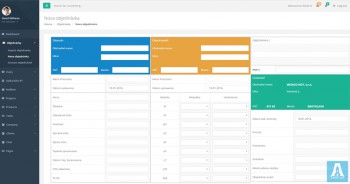HTML5 is a markup language used for structuring and presenting content on the World Wide Web. It is the fifth and current version of the HTML standard.
HTML5 includes detailed processing models to encourage more interoperable implementations; it extends, improves and rationalizes the markup available for documents, and introduces markup and application programming interfaces (APIs) for complex web applications.[5] For the same reasons, HTML5 is also a candidate for cross-platform mobile applications, because it includes features designed with low-powered devices such as smartphones and tablets.
Many new syntactic features are included. To natively include and handle multimedia and graphical content, the new <video>,<audio> and <canvas> elements were added, and support for scalable vector graphics (SVG) content and MathML for mathematical formulas. To enrich the semantic content of documents, new page structure elements such as <main>, <section>,<article>, <header>, <footer>, <aside>, <nav> and <figure>, are added. New attributes are introduced, some elements and attributes have been removed, and others such as <a>, <cite> and <menu> have been changed, redefined or standardized.
The APIs and Document Object Model (DOM) are now fundamental parts of the HTML5 specification and HTML5 also better defines the processing for any invalid documents.














